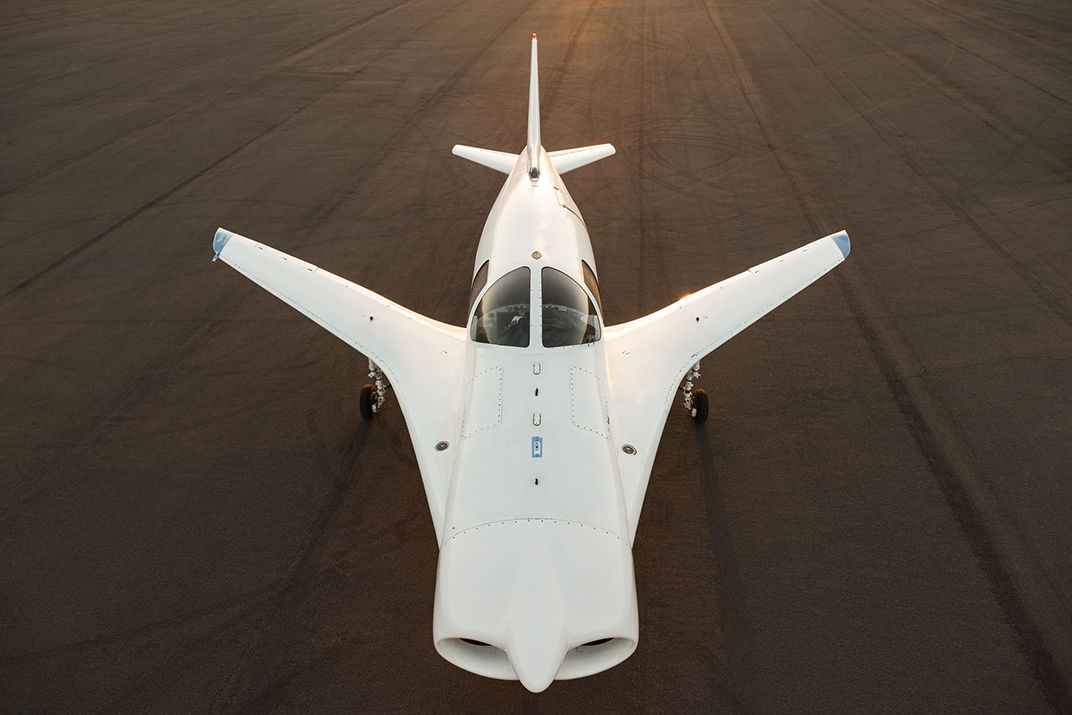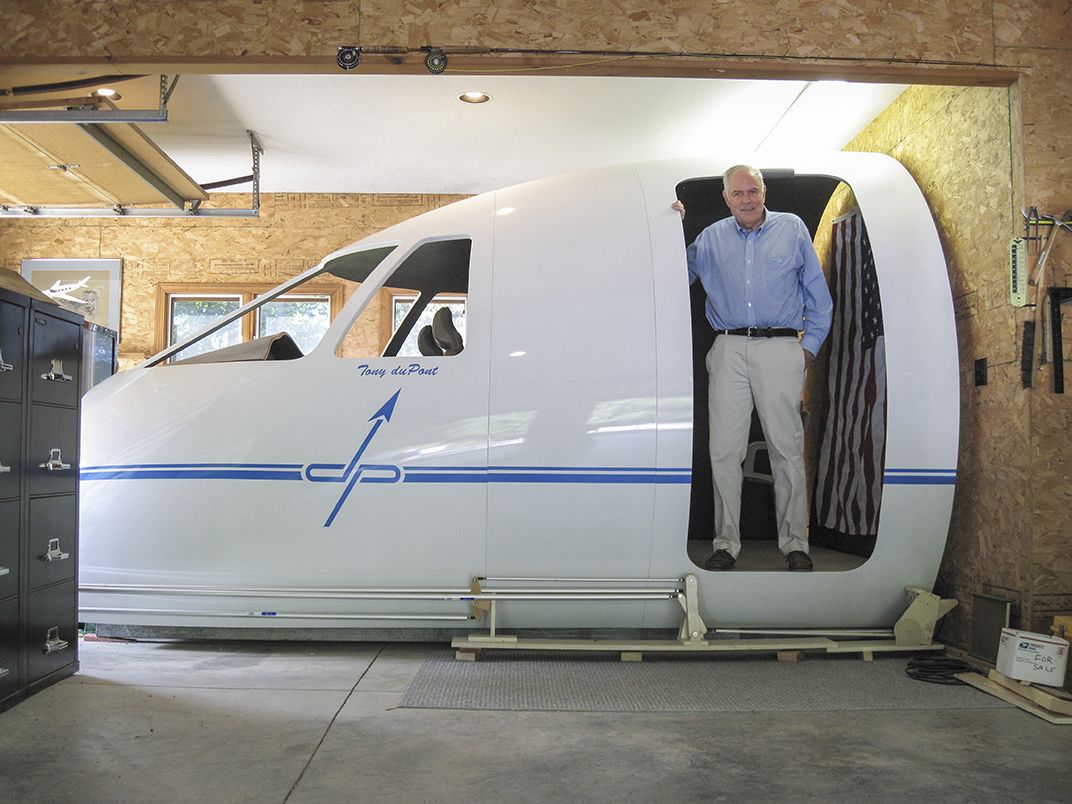The Puzzle of Vertical Takeoff
Followed by the failure of vertical landing.
/https://tf-cmsv2-smithsonianmag-media.s3.amazonaws.com/filer/28/f1/28f1d23c-f65c-4975-82bc-8ddb2440f748/03-cancelled-dupont-runway.jpg)
In 1968, Tony duPont, an aeronautical engineer at Garrett AiResearch, visited Pan American Airways to promote new turbofan engines. The airline execs listened politely, then told him that what they really wanted was an eight-passenger jet able to launch from Pan Am’s Manhattan skyscraper and fly nonstop to Los Angeles.
The following year, duPont left Garrett to found duPont Aerospace. By day, he ran studies for a classified Defense Advanced Research Projects Agency spaceplane; at night, he tackled Pan Am’s challenge. In 1972, he began marketing his design: an eight-place vertical/short-takeoff-and-landing jet with vectored thrust. His DP-2 could be used by businessmen, or by the military speedily inserting troops onto rugged terrain. But Pan Am and other airlines doubted his ability to succeed, and the military wasn’t interested either.
Two decades later, prospects shifted. The Bell Boeing V-22 tiltrotor program had experienced huge cost overruns and three fatal crashes. In a 1991 Congressional hearing, Representative Dana Rohrabacher of California pushed the DP-2: “Success in future military conflicts will depend on aircraft that land and take off without airfields, delivering troops and equipment…around the globe. The duPont DP-2 fulfills this requirement.”
The performance it promised particularly appealed to the Marine Corps, whose CH-46 helicopters lumbered along at 155 mph; duPont was promising 580 mph and a 5,000-mile range. Rohrabacher pushed Congress to approve $7.5 million for the DP-2 as a backup to the V-22 program.
That launched the DP-1A, a single-seat demonstrator powered by two Pratt & Whitney Canada 530A turbofan engines. The design incorporated supercritical airfoils to lower drag, increasing speed and range. Turbofans provided the high thrust-to-weight ratio required for vertical takeoff. Liberal use of composites reduced weight. The DP-1A first hovered in 2002, pilotless and tethered to a steel pad. A year later, with upgraded engines and a new name, the DP-1B crashed while tethered.
DuPont rebuilt it into the DP-1C, but over the next three years the jet had three more serious accidents and never achieved free flight. By then the program had burned through $63 million. Wayman Dunlap, editor of Pacific Flyer, published a series in early 2007 revealing that the program’s biggest supporters were two San Diego-area Congressmen, Duncan Hunter and Christopher Cox, who together had received more than $50,000 in campaign funds from duPont Aerospace.
Congressional hearings followed in June. “The DP-2 is still not operational, and has never received a positive technical review in more than 20 years,” said Representative Brad Miller of North Carolina. Experts from NASA, DARPA, and the Office of Naval Research testified that although the design failed every test, they were ordered to fund the aircraft.
Witness John Eney, a retired Navy analyst, inspected a duPont facilities site in 1999 and reported: “I felt like I had to burn my clothes afterwards.” His Navy team’s report cited, among other things, impossible center-of-gravity challenges, contractor inexperience, hazardously loud noise, brittle composite structures, and duPont’s decision to site the test pad just yards from a freeway.
Hunter, ranking member of the House Armed Services Committee, rebutted. The V-22 program had cost more than $11 billion and killed 30 people, he noted, while the DP-1C cost less than one half of one percent of that amount and had killed nobody. “Not all great ideas come out of the Pentagon,” he declared. Finally, duPont defended duPont, testifying that “this is a research program, not a development program.” Brad Miller concluded the hearings by wondering, “Twenty years later, with every disinterested expert having concluded that this project is just fraught with problems, should we continue to fund this?”
His fellow Congressmen answered no. Later that year the DP-1C made its final hover, incorporating software changes that finally made the aircraft, in duPont’s words, “fly like an angel.”
DuPont retired to Vermont, where a DP-2 cockpit sits in his garage. “I’m refining the autopilot’s stability augmentation,” he says today, “so if something comes to life and there’s an opportunity...we’ll try to line up financing and build it.”

